The organ builder
The constructor of an organ is named organ builder . Thomas Ospital enlightens us on this profession as well as on the different stages in the construction of an organ.
The church of Cambo currently houses an instrument acquired by the parish in the mid-19th century. This one is attributed to Father Clergeau. Fascinating character who will be successively priest, writer (Chateaubriand’s biographer), musician, inventor but also bank manager, company director. . .
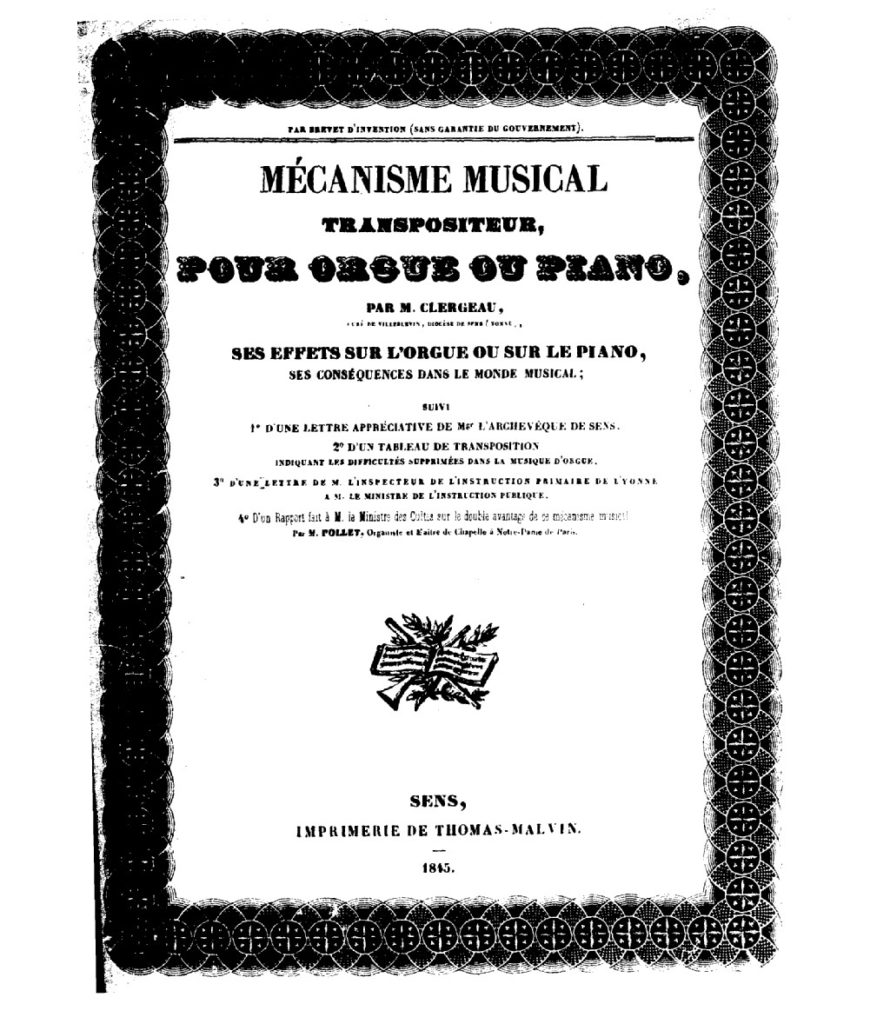
Father Clergeau certainly never built an organ, he associated himself with companies like Stolz or Alizant to build them. We owe him above all the concept of these organs accessible to the most modest parishes.
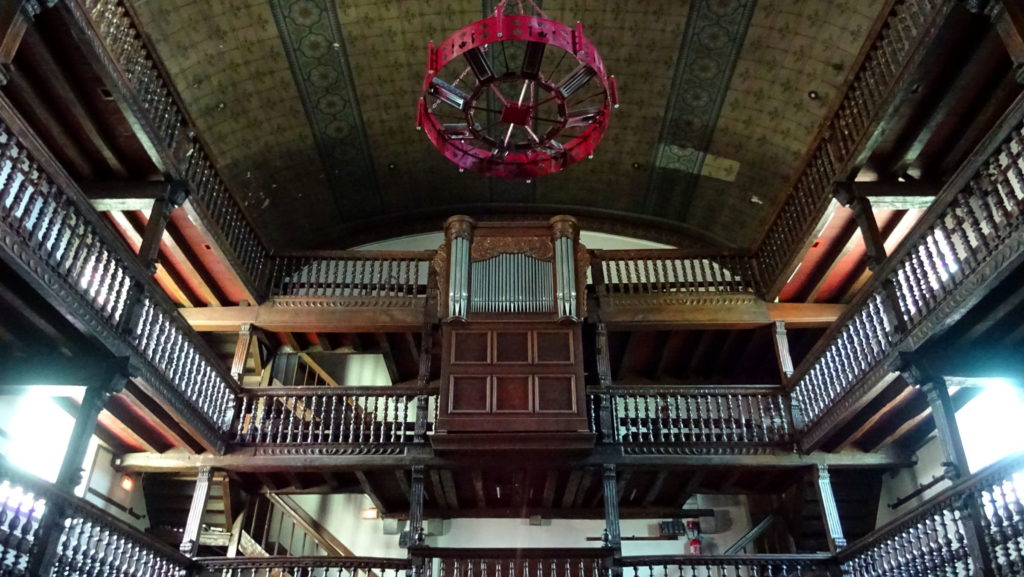
The characteristics of the current organ
We knows the majority of those intruments are build on the same model with a transposing keyboard.
Some of which are divided into bass and top, and a pedalboard in permanent drawl.
At first he vocation of these instruments is liturgical.
They were used to accompany hymns or plainchant. The musical possibilities are therefore very limited.
Our organ of Cambo is a typical instrument of Abbé Clergeau.
It has a 54-note transposing keyboard and an 18-note pedalboard in permanent drawl.
| The Transposing Keyboard of Cambo’s current organ 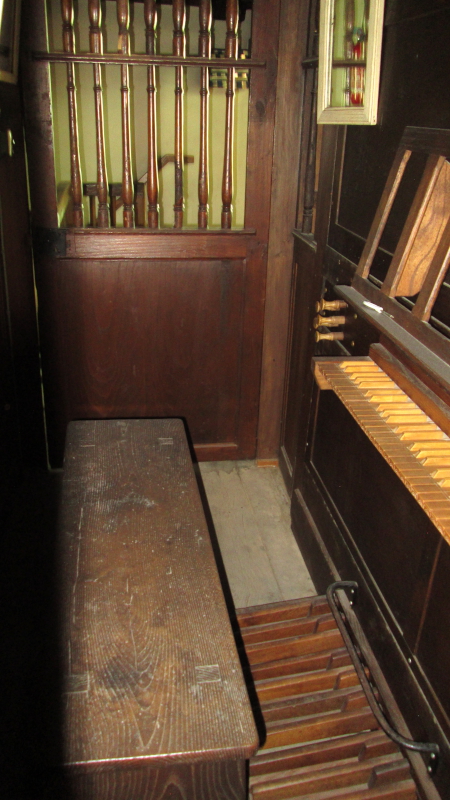 Composition : Flûte 8’ Bourdon 8’ Viole de Gambe 8’ Voix Céleste 8’ Prestant 4’ Octavin 2’ Basson 8’ (Basses) Trompette 8’ (Dessus) Clairon 4’ (Basses) Hautbois 8’ (Dessus) |
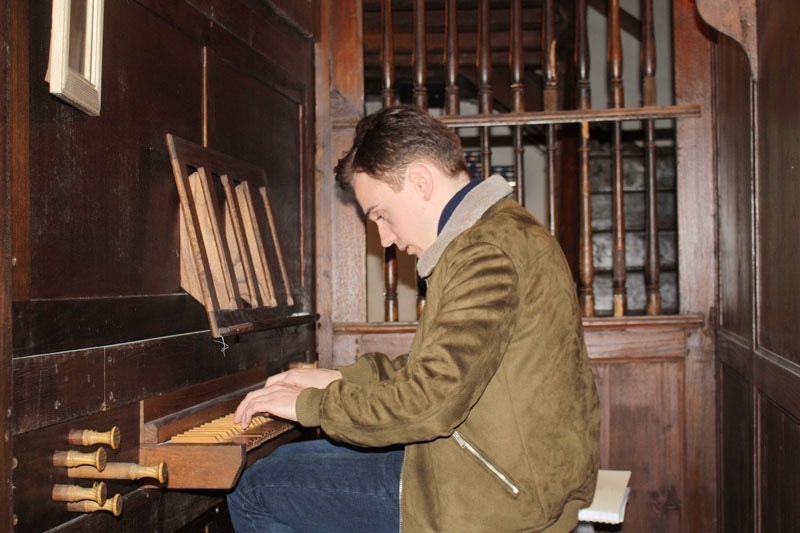
This instrument is almost never used because its possibilities are too limited.
It does not have great heritage and artistic value.
An analysis shows us this instrument was more functional than musical.
So the municipality of Cambo wishes to acquire a new instrument imagined and designed for its church.
A respectful project
This work related to the integration of the new organ will be carried out under the supervision of a heritage architect
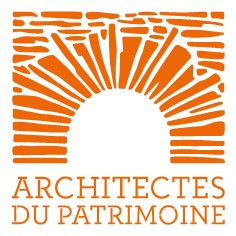
In Bask country, churches have wooden galleries.
The acoustics are therefore clear and not very reverberant.
That is why we have chosen an organ of German Baroque aesthetics from the region of Saxony.
The instruments created by Gottfried Silbermann are particularly inspiring.
Below is an illustration of Kristian Wegscheider for Cambo :
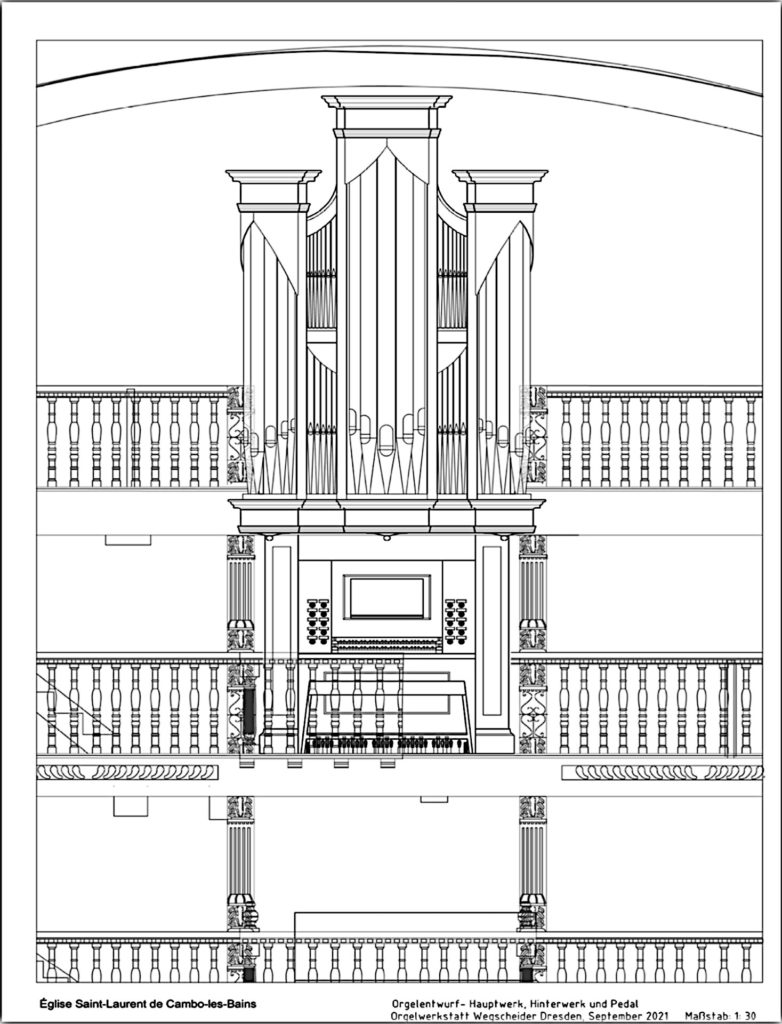
What we imagine
It will not be a question of copying an existing instrument, but to be faithfully inspired by this style, these techniques, to build an organ adapted to the church of Cambo.
The new organ will be integrated into this exceptional church, which is currently being restored, without distorting the beauty of its architecture.
Design of furniture must fit harmoniously into the church’s decoration, respecting the overall proportions and without giving the impression of an added element.
The space requirement for the new organ will be roughly 60% higher: it will be based one storey lower, on the first gallery. The buffet can extend up to the vault of the church to a height of about 8 meters.
Work will therefore be necessary to fit out the galleries, in particular the removal of the floor of the second gallery, which probably dates from the 19th century when the organ was installed.
The stands may have to be reinforced to support the weight of the instrument. Their realization and price will be included in the contract.
Project Features
The organ will have two 56-note manuals and a 30-note pedalboard.
The musical capacity of this new instrument will be 4 to 5 times higher than the old one.
Propositions for stops
We propose below a composition that can serve as a basis for our reflection :
We imagine 17 stops. Stops will be controlled by two keyboard which will have 56 notes or 4 octaves 2/3 of 12 notes and by a 30 notes pedalboard.
The names of the stops (named in German) generally refer to the instruments they imitate:
Dulcian for example is the ancestor of the bassoon.
For the game called Trompete the translation is useless
Posaunen corresponds to the trombone, Hohlflöte to the flute etc.
And can also define the pitch: ex :subass or octave 4
The dimension of the stops is expressed in feet: Subass 16′ indicates pipes of 16 feet, i. e. +/;- 4. 88 meters, so very long for the lowest notes.
| Hauptwerk : Principal 8’ Viola di gamba 8’ Hohlflöte 8’ Oktave 4’ Nasat 3’ Oktave 2’ Mixtur V Trompete 8’ | Positiv : Holzgedackt 8’ Holzprincipal 4’ Waldflöte 2’ Sesquialtera II Dulcian 8’ | Pedal : Subass 16’ Octavbass 8’ Posaunen 16’ Trompete 8’ |
Equipment proposals
The transmission of notes and registers will be mechanical.
Organ bases will be with engravings and sliding registers, in solid wood, of traditional construction. The mechanics will be as direct as possible (suspended or treading) and with a minimum of adjustment points.
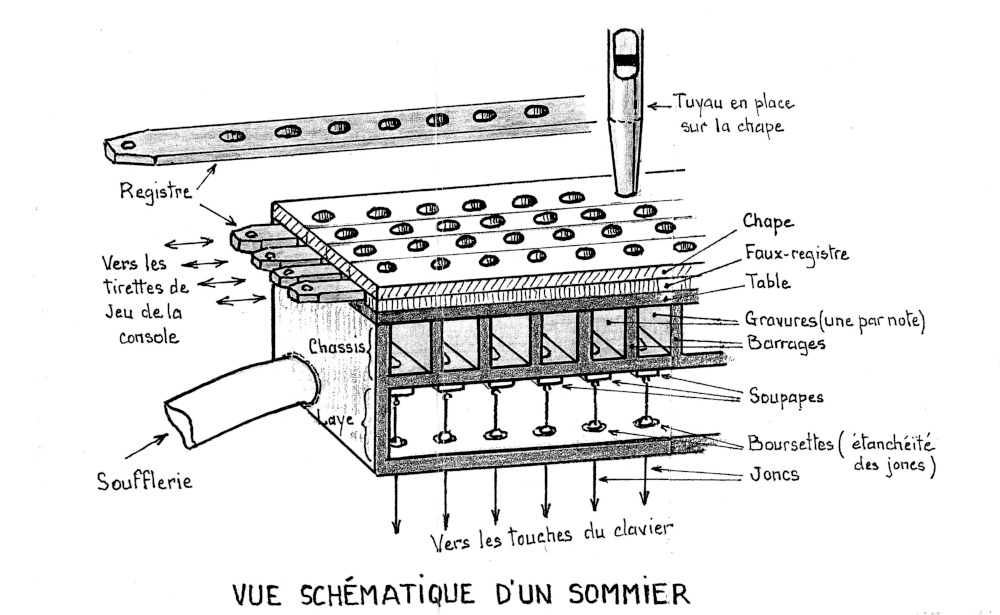
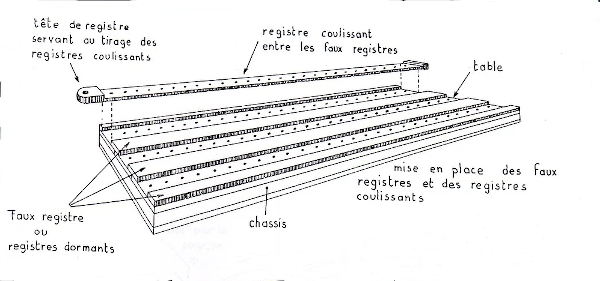
We think we’ll choose a pedalboard with 30 notes (two octaves 2/3)
The console will contain 2 keyboards of 56 notes with two side panels of zipper pulls.
We have not yet define the material of the keyboard keys. It will eventually be ebony: it is still under study for a question of budget. The ivory will probably be discarded.
The design of the wind tunnel will be at the discretion of the factor. Installed behind the console on the first floor, it will have 2 or 3 bellows activated by an electric motor: the technical solutions will be proposed by the craftsmen during the call for tenders.
We think the chord will be in a slightly uneven temperament.
Our final choice of temperament will be made in consultation with the main users. The pitch can be 442 Hz at 18°C.
The organ stands 8 meters from the first gallery, so the organ case will consist of a single body. If the builder decides to add a back positive, he will have to justify his choice technically and musically.
The buffet will have a baroque aesthetic without slavishly imitating Silbermann. The wood will be coloured and should echo the colours of the choir and the vault being restored. Gold-coloured decorative elements will be integrated.
Finally, the buffet should provide a visual response to the decoration of the church choir, without ostentation but in a balanced way.



